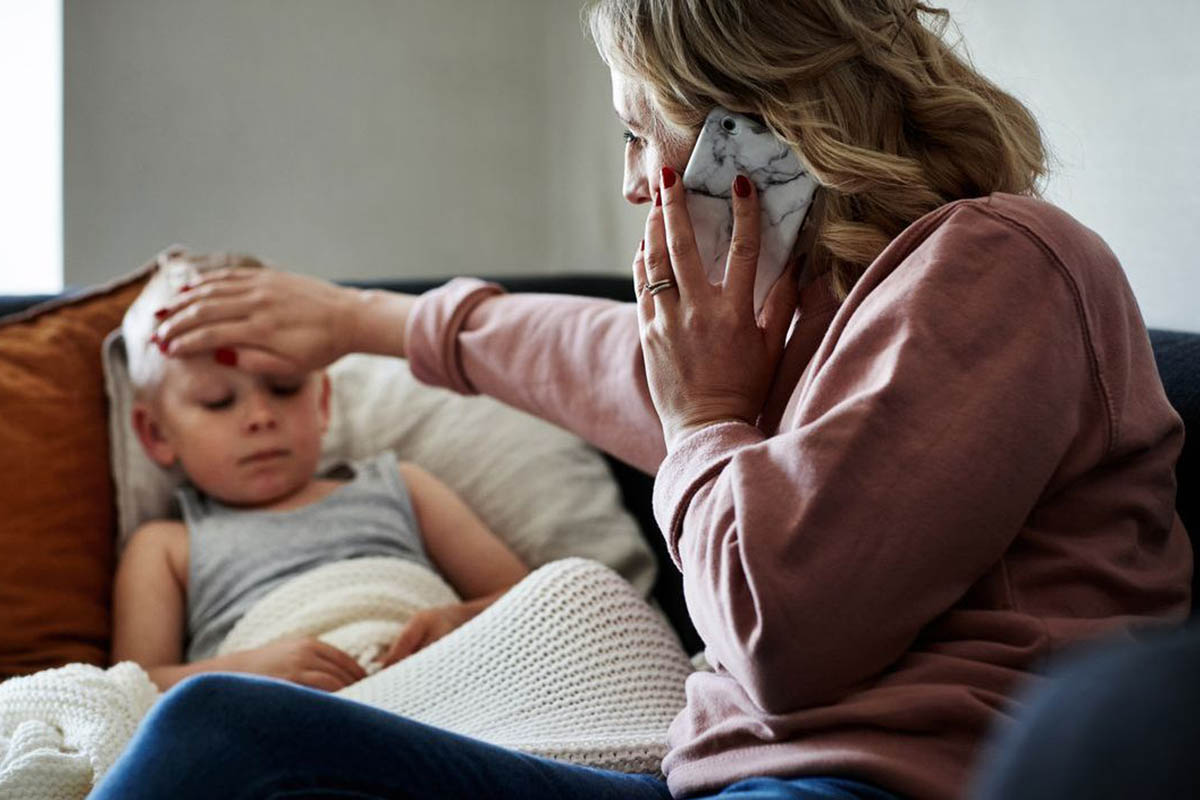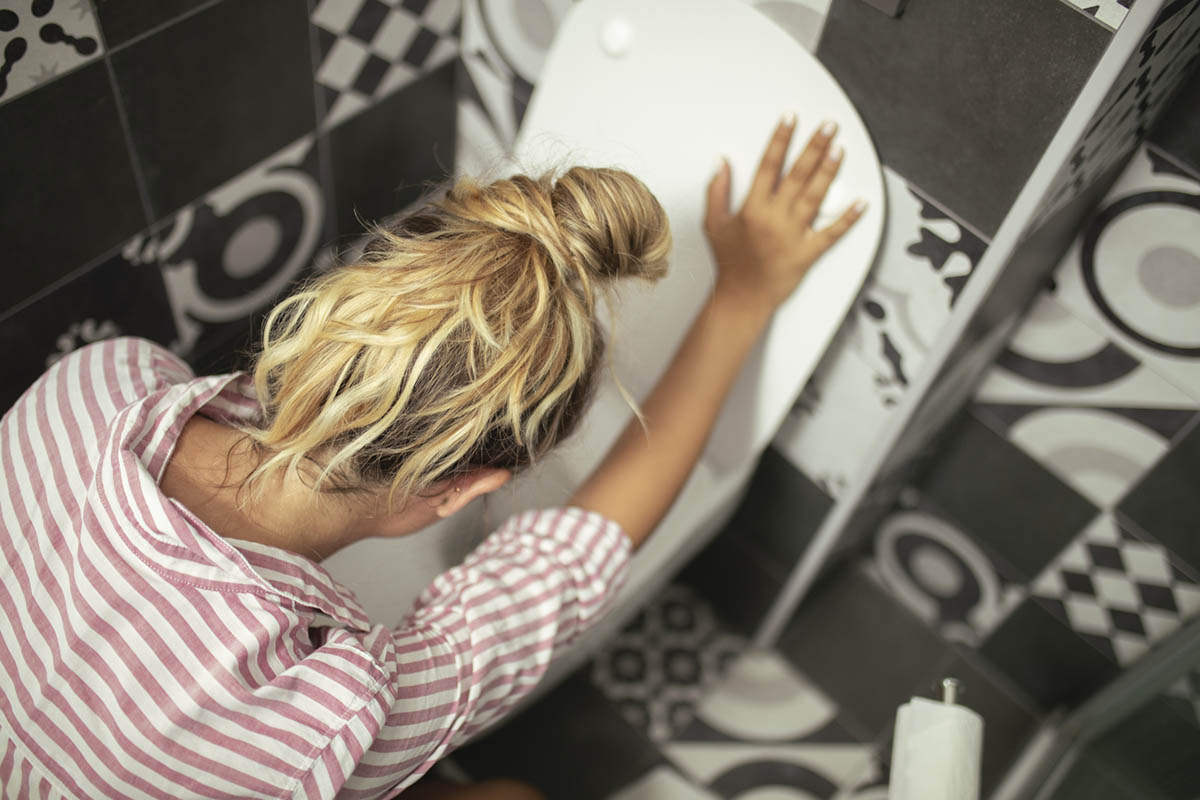Patients with COVID-19 have been shown to present with higher levels of depression, anxiety, and posttraumatic stress symptoms compared to healthy controls.1 Social isolation, limited health care resources, and proinflammatory states have all been postulated as potential contributing mechanisms that can impact mental health.2 Uvais3 described a patient who developed persistent panic disorder and hypertension that began during a COVID-19 infection. Bhatia et al4 reported new-onset panic disorder precipitated by frequent hearing of news of the COVID-19 infection outbreak. We describe a case of panic attacks that occurred repeatedly as part of the constellation of presenting symptomatology for an individual during 2 separate COVID-19 infections.
Case Report
Mr A was a healthy 22-year-old Asian man with no prior psychiatric history who in July 2022 developed the sudden onset of sweating, lightheadedness, fear of losing control, depersonalization, and feelings of dread and doom that peaked within 30 minutes, with residual anxiety that persisted for 2 hours. Over the next couple days, he experienced 2 additional similar episodes, with more minor symptoms that lasted 10 minutes. A telehealth evaluation determined that Mr A met diagnostic criteria for panic attacks, and lorazepam 0.5 mg as needed was prescribed. Three days after the first panic attack, he developed a runny nose and fatigue. The next day Mr A, who had received his third COVID-19 vaccine in November 2021, tested positive for COVID-19. He began treatment with Paxlovid. No subsequent panic attacks occurred.
In December 2023, Mr A, who had remained free of panic attacks for 18 months and received his fourth COVID-19 vaccine in June 2023, developed symptoms of sneezing, runny nose, headaches, body aches, and fever. Five hours after his physical symptoms began, he described feeling as though a “switch went on,” with the sudden onset of lightheadedness, derealization, sweating, and fear of losing control, followed by anxiety, intense worry, and feelings of doom that lingered for an hour. The next day, he continued to have headaches and sniffles and experienced a second panic attack, similar to the night before. Recalling his previous COVID-19 infection, Mr A took a COVID-19 test, which was positive. Paxlovid treatment was started, and he had no further panic attacks.
Discussion
Mr A’s panic attacks corresponded to the course of his COVID-19 symptoms, with no further episodes after initiation of treatment with Paxlovid, suggesting that they may have been due to COVID-19. Awareness of panic attacks as presenting symptomatology for COVID-19 may be important in the prompt identification of an infection. Potential mechanisms for early neuroinvasion of COVID-19 include neuronal and nonneuronal cell infection of the olfactory bulb and other cranial nerves.5 Olfactory bulb invasion can provide single synapse access to specific areas of the amygdala.6 Such a pathway could enable early episodic neuropsychiatric amygdala dysregulation, with the onset of symptoms consistent with sporadic panic attacks during the presentation of COVID-19. These effects may manifest with greater frequency as new severe acute respiratory syndrome coronavirus 2 viral variants explore novel mechanisms of infection, replication, and dissemination within the human body.
Article Information
Published Online: November 21, 2024. https://doi.org/10.4088/PCC.24cr03714
© 2024 Physicians Postgraduate Press, Inc.
Prim Care Companion CNS Disord 2024;26(6):24cr03714
Submitted: January 31, 2024; accepted April 19, 2024.
To Cite: Joshi T, Suri R. Panic attacks in the presentation of COVID-19. Prim Care Companion CNS Disord. 2024;26(6):24cr03714.
Author Affiliations: Division of Cardiology, Department of Medicine, University of California San Francisco, San Francisco, California (Joshi); Department of Psychiatry and Biobehavioral Sciences, David Geffen School of Medicine at University of California Los Angeles, Los Angeles, California (Suri).
Corresponding Author: Rita Suri, MD, Department of Psychiatry and Biobehavioral Sciences, David Geffen School of Medicine at University of California Los Angeles, PO Box 943, PVE, Los Angeles, CA 90274 ([email protected]).
Relevant Financial Relationships: None.
Funding/Support: None.
Patient Consent: The patient consented to publish the report, and information has been de-identified to protect anonymity.
References (6)

- Guo Q, Zheng Y, Shi J, et al. Immediate psychological distress in quarantined patients with COVID-19 and its association with peripheral inflammation: a mixed method study. Brain Behav Immun. 2020;88:17–27. PubMed
- Ahmad SJ, Feigen CM, Vazquez JP, et al. Neurological sequelae of COVID-19. J Integr Neurosci. 2022;21(3):77. PubMed
- Uvais NA. COVID-19–associated panic disorder. Prim Care Companion CNS Disord. 2021;23(1):20102826.
- Bhatia MS, Goyal S, Singh A, et al. COVID-19 pandemic–induced panic disorder. Prim Care Companion CNS Disord. 2020;22(3):20102626.
- Reza-Zaldívar EE, Hernández-Sapiéns MA, Minjarez B, et al. Infection mechanism of SARS-COV-2 and its implication on the nervous system. Front Immunol. 2021;11:621735. PubMed
- Kadohisa M. Effects of odor on emotion, with implications. Front Syst Neurosci. 2013;7:66. PubMed CrossRef
Please sign in or purchase this PDF for $40.





